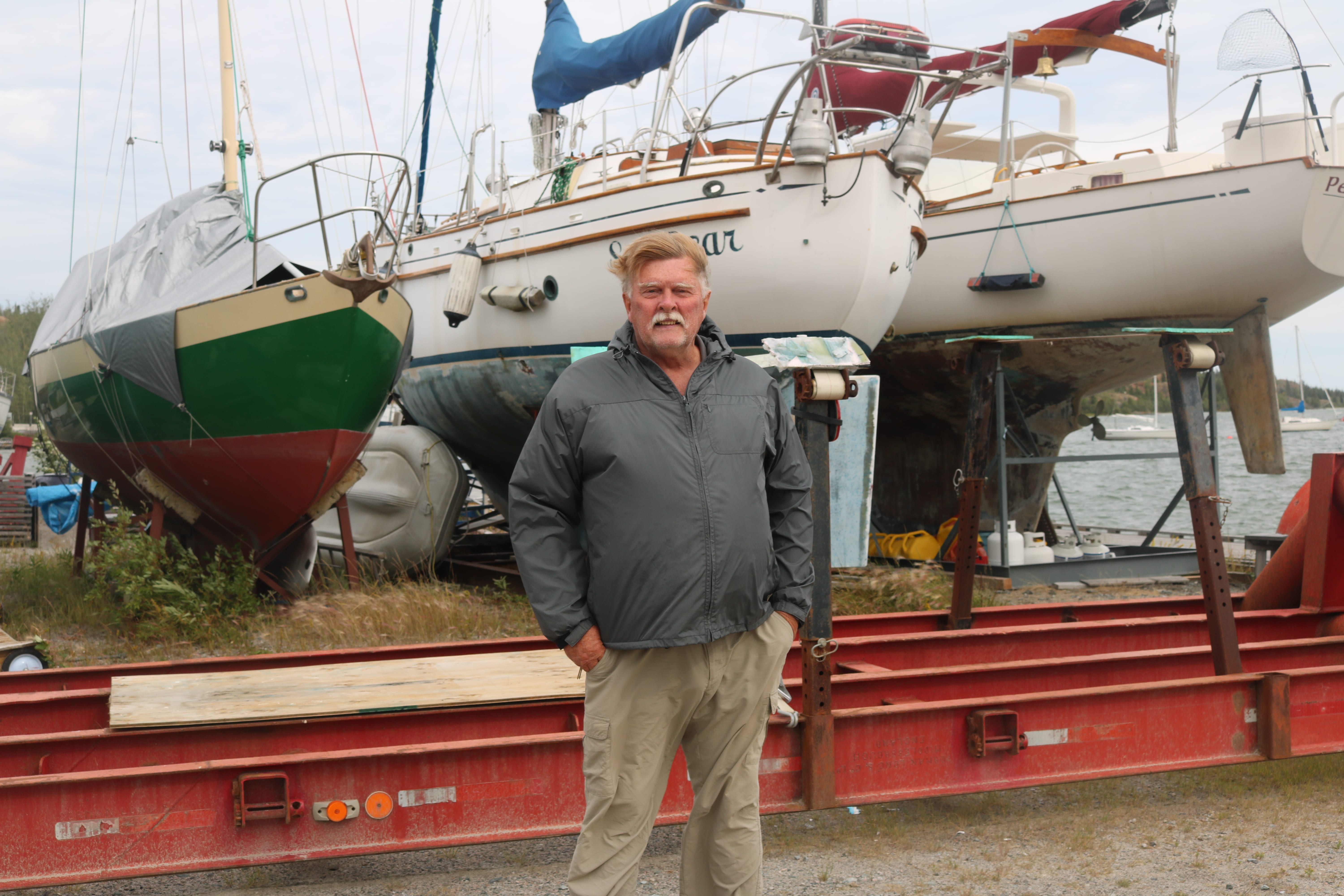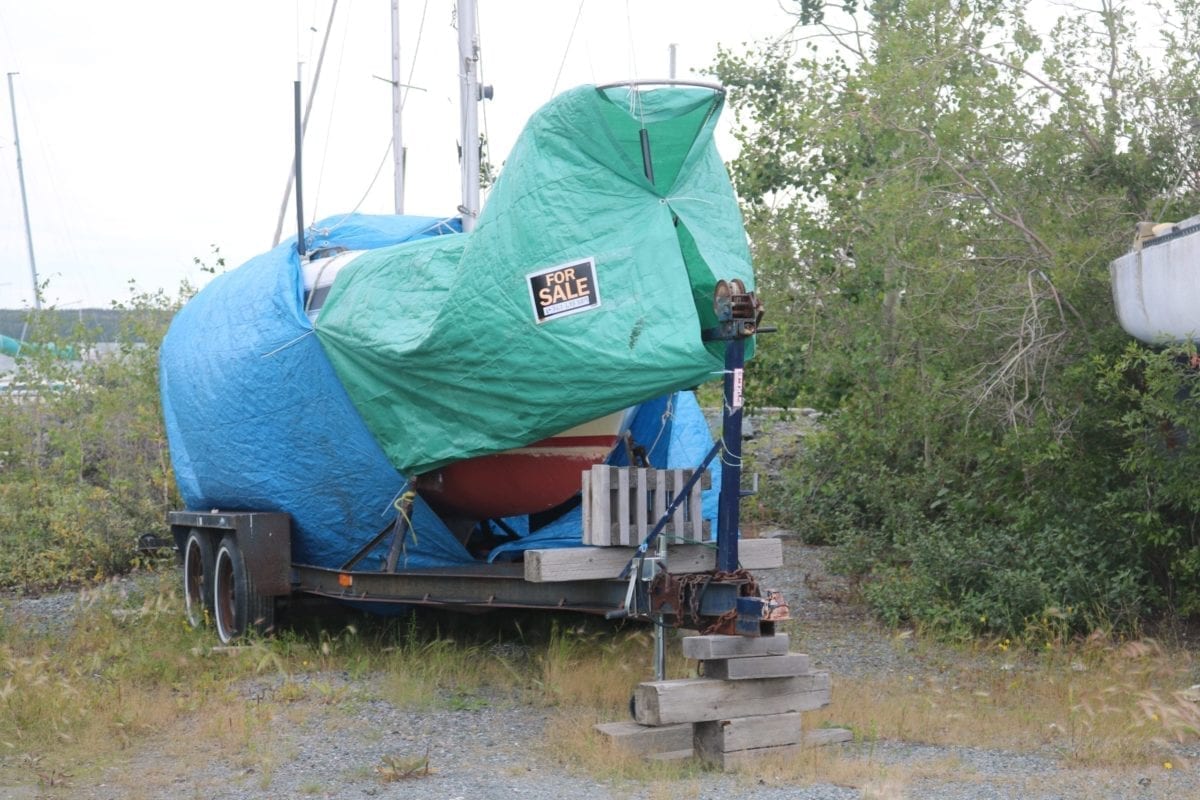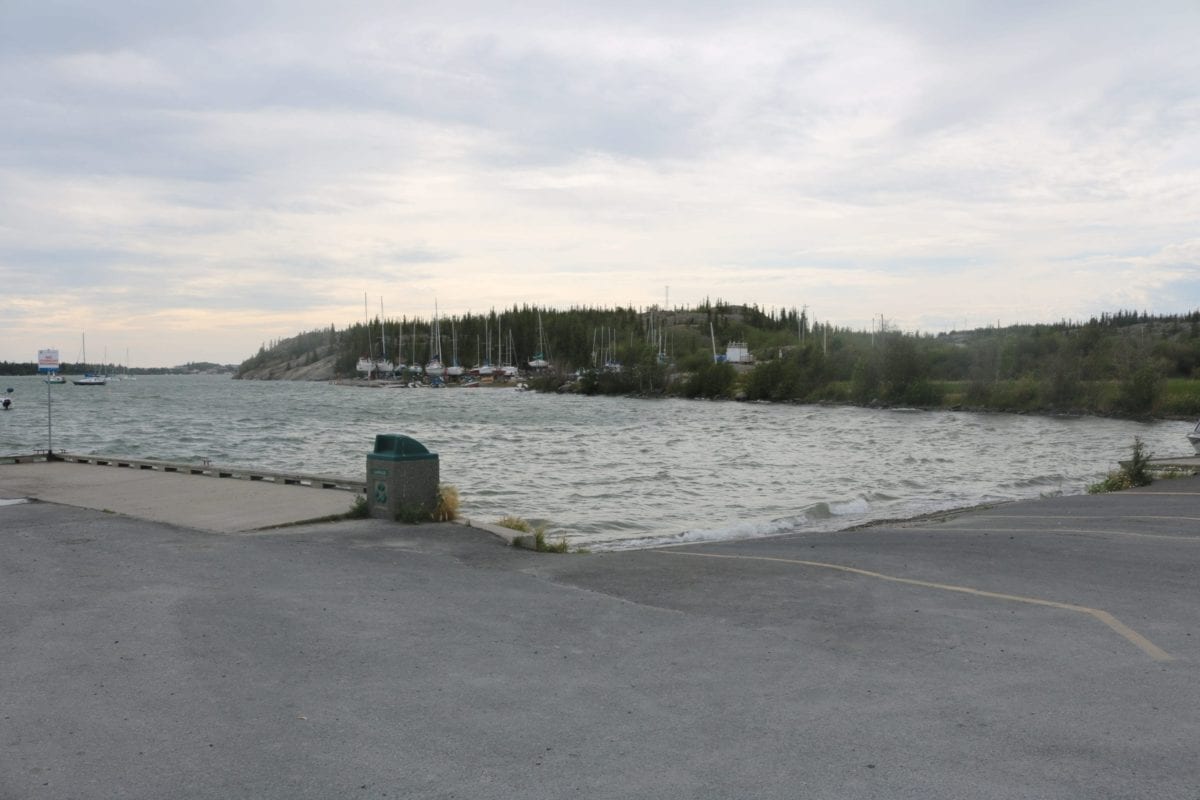Members of the Great Slave Sailing Club say they are feeling much "uncertainty" these days as their decades-old safe haven faces closure due to clean-up work at Giant Mine.

Simon Whitehouse/NNSL photo
Both the City of Yellowknife, which leases the property from the territorial government, and the sailing club, which sub-leases its property from the city, received notices that the Giant Mine project team would take possession of the property after 2022.
The federal government's Giant Mine Remediation Project Team is awaiting a Type A water license from the Mackenzie Valley Land and Water Board (MVLWB) -- expected in mid-2020. Should that licence application prove successful, a major soil contamination cleanup and dredging of sediment at the bottom of the Back Bay will tentatively begin in 2023. Work is expected to continue for at least the next decade.
Yellowknifer reported earlier this year that the project team’s plans to remediate the town site area at Giant Mine to residential standards could potentially mean that both the city’s public dock - a major access point to Great Slave Lake - and the Great Slave Sailing Club could be removed indefinitely due to planned dredging work along the shore. A planned mining museum by the Yellowknife Historical Society is expected to similarly face heavy costs as artifacts will have to be moved into storage.
The land and water board has invited boaters and others impacted by the potential closure of the site to apply for for compensation.
Shelagh Montgomery, executive director of the MVLWB, stated in an email that notice was sent to club members in late June explaining how compensation for the lost boating access works.
"The board provided an overview of water compensation ... that was sent to our distribution list on June 28 (and uploaded to our online registry)," she stated in an email. "Included in that document is a form for potential claimants to use to notify the board of their intent to file a claim for water compensation."
The deadline to file notice was Aug. 15. Close to 25 respondents replied, according to the board's public registry.

Simon Whitehouse/NNSL photo
Boaters - both motorboat users and sailors - have said the announcement came as a surprise and that long-term disruption could prove devastating to recreation activities on Great Slave and the Yellowknife economy because of the special access to the lake the location provides.
Ian McCrea, with his wife Rita, have spent 20 years with the club, including several years volunteering as commodores and directors. McCrea said in an interview last week that he is trying to remain optimistic, but admits he and other sailing club members face an uncertain future.
“The big problem is the uncertainty,” he said. “We don’t know when it is going to start, what work it will do, how long it will take and whether we will be permitted back. Virtually nothing is known.”
McCrea said he and other club members believed up until July 2018 that the town site, as part of the Giant Mine Project Team's cleanup, was to be remediated only to industrial standards, a lesser standard than the now planned residential requirement, which will require a more detailed and longer-term cleanup.
"This was a sudden change from the previous understanding we had which was a remediation to industrial standards and that was the case up to July 2018 when they published the new plan and the story changed entirely," he said.
"We only got a hold of the plan a month or so after that."
Problems with moving
 The City of Yellowknife has given some consideration in acquiring land to relocate boating and sailing facilities near Mosher Island around the former Con dock location. McCrea said the area does not have the same shallow waters as the Great Slave Sailing Club and would make launching and mooring sailboats six to 10 times more expensive with chains, anchors and costs of moving boats into and out of the water.
The City of Yellowknife has given some consideration in acquiring land to relocate boating and sailing facilities near Mosher Island around the former Con dock location. McCrea said the area does not have the same shallow waters as the Great Slave Sailing Club and would make launching and mooring sailboats six to 10 times more expensive with chains, anchors and costs of moving boats into and out of the water.
McCrea said city sailors have few options as the Giant Mine site is the only suitable location around Yellowknife to launch sailboats. The current site, which has been in use by the club since 1976, has unique geographical features that allow sailboat owners to easily moor their boats in a mooring field with shallow water - anywhere from 14 to 30 feet - and launch in and out of the water by crane.
Other potential harbours - such as behind Mosher Island - are not feasible, McCrea said. Not only would the location impede incoming and outgoing traffic into Great Slave Lake, but the lake bottom around the island is a daunting 90 feet deep. This would require extensive chains and anchors to moor, he said.
Yet another problem is the difficulty in moving sailboats out of water, he said. The current location allows for storage and hauling boats out with cranes - craft ranging between 14,000 and 35,000 lbs.
"We have 17 boats that are not mobile in any circumstances and are on cradles in the yard," said McCrea. "Ours is one that is on a trailer but my truck won’t get it over the crown of our hill so to take it out to repair, I have to charter a tractor to haul it out."
People impacted
The club has about 80 memberships, which represents families and people stretching into the hundreds, McCrea said. On top of that, with a sailing school that attempts to draw youth into the sport, there are potentially close to 400 people directly involved in Yellowknife every year.
About half of the number of users, he added, are either retired or semi-retired, meaning that with the shut down of the club, members could be suddenly stuck with a boat they unable to use or sell.

Simon Whitehouse/NNSL photo
"My health is still good enough where I don’t have to sell my boat but with this uncertainty, if my health turned for the worse, I would be stuck with something I couldn’t sell," he said, adding potential buyers would have difficulties finding a place to store their boats if them if they bought them or have a place to launch at an affordable price.
One couple questioned how they were going to sail their boats if there was no facility to launch from.
"The value of the many boats in our club has been reduced to less than zero due to the uncertainty of whether there will ever be a suitable facility at which we could launch, retrieve, and store, maintain our vessel," one applicant wrote.
"No one will purchase our boat if there exist NO suitable place to use it and enjoy it. It is likely that boats such as ours will become un-sailable and un-saleable."
McCrea said the club hopes future clean-up work can be structured in such a way that it can be done in stages that would allow for minimal long-term disruption to the club.
"I am hoping and I am cautiously optimistic that a staged approach to the remediation of our area can be undertaken," he said. "We are only a few acres and we did make an application for additional land (nearby) so that we could spread out a little more to move boats away from our property so they could remediate the property."
City of Yellowknife water line and feasibility study
Among the applicants for financial compensation due to disrupted use of the bay is the City of Yellowknife, which filed two applications - one asking for $8.6 million to help pay for a new water pipeline planned for construction to Yellowknife River. Funding would go toward the construction of its water pipeline - partly funded by Infrastructure Canada ($25.8 million) - and "mitigat (ing) the Risk caused by the activities in the applicant's licence."
"The activities for which DIAND seeks authorization in its water licence application would significantly adversely affect the City's ability to obtain water from Yellowknife Bay," the Aug. 15 application states.
The application notes that the Giant Mine team's application for the water licence could lead to "a flood hazard risk resulting from a prolonged period of precipitation that could cause a failure of the Northwest Pond, leading to the discharge of, among other things, arsenic into Yellowknife Bay, rending the water undrinkable" and "further risks to be identified in the water licence process."
"Any interruption to the City's water supply would have significant and drastic consequences," the city's application states.
A second city application is seeks compensation for a feasibility study in helping to find another location for the public boat launch and the sailboat facilities. A dollar figure was not disclosed in the application.

Simon Whitehouse/NNSL photo.
Kerry Penney, director of policy, economic development and communications for the city, stated in an email Tuesday that proposed remediation will cause disruption to access by city users.
“The suspension of access means that residents will be adversely impacted by not having access to adequate boat launch facilities,” Penney stated. “The City has been in negotiations with the Licence applicant (the remediation team) to compensate it for the significant adverse impacts of the activities proposed in the Licence on the City—including a feasibility study for alternate dock configurations to compensate for the loss of use of the Town Site.”
The city, as has been reported by Yellowknifer, began taking initial steps to find another public boat launch and sailing club last March. Penney reiterated that the city continues working with the remediation team but an alternate site has not yet been found.
"The City has been working with the Project Team to address future disruptions to the site as a result of remediation activities," she stated. "To date the City does not have an alternative location secured."
If and when it does locate one, the feasibility study will have to be conducted- something that the city states it cannot do alone.
"A feasibility study would need to be commenced as soon as possible to determine whether a viable alternative site exists," Penney stated. "Additional resources would be required to construct an equivalent boat launch facility at another location on Great Slave Lake."


